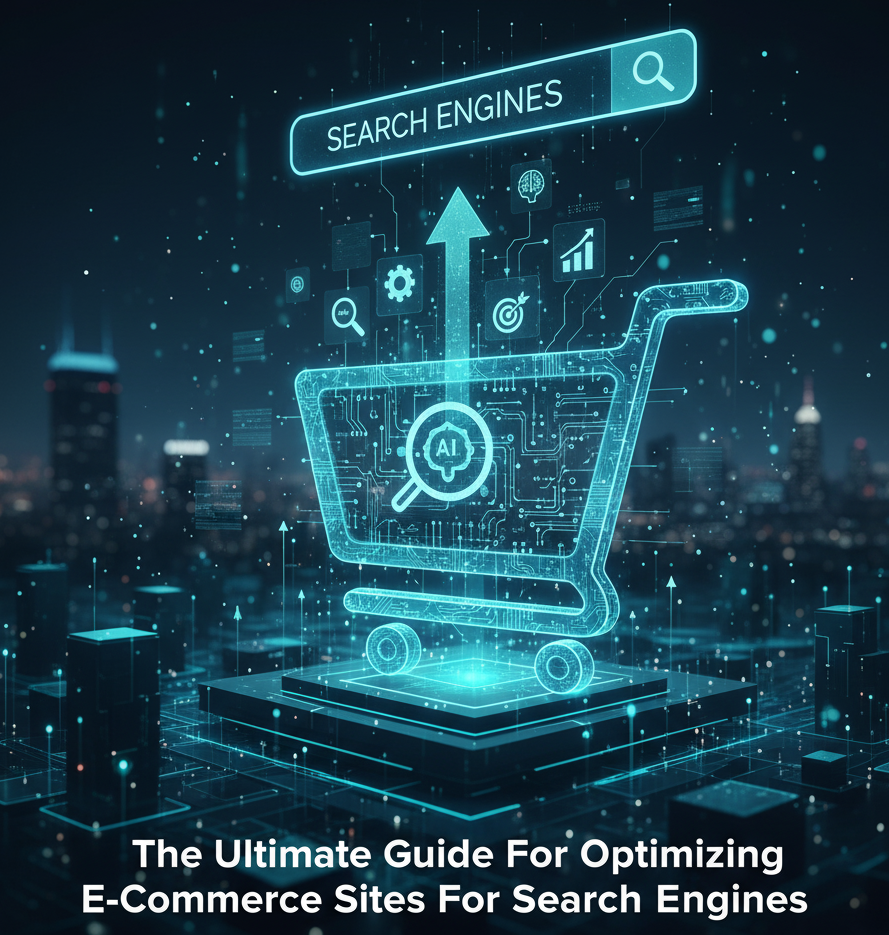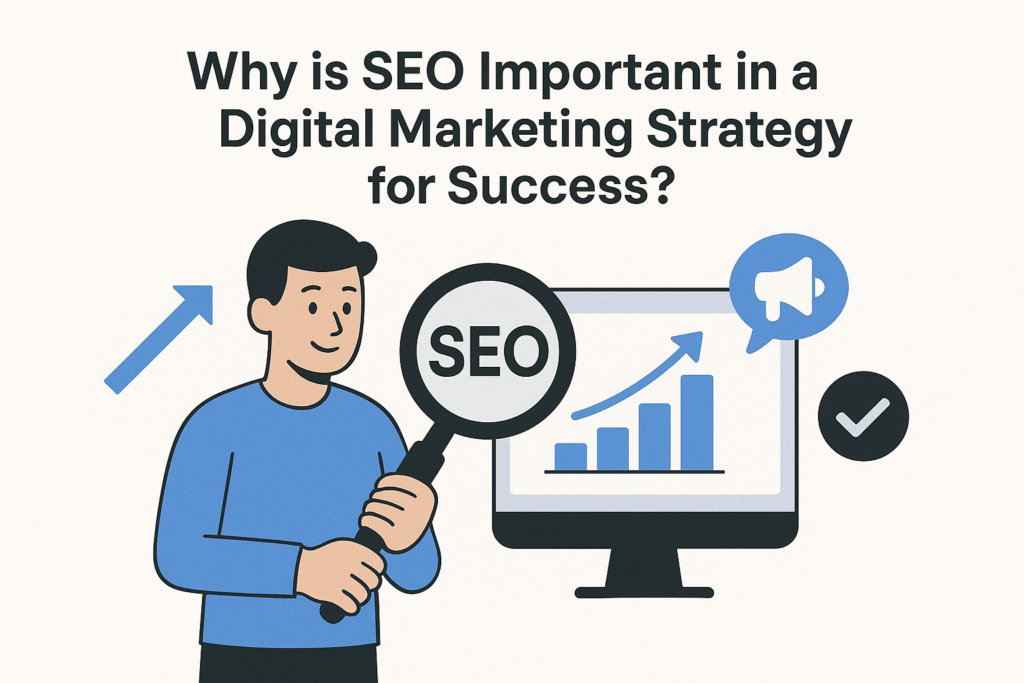Contents
- 1 What is Ecommerce Website Redesign?
- 2 Strategic Foundations For A Redesign
- 3 Information Architecture And Content Strategy
- 4 Performance Engineering And Page Load Speed
- 5 Designing For Mobile Usability And Responsive Design
- 6 Checkout Experience And Conversion Science
- 7 Search Visibility And Technical Integrity
- 8 Measurement, Analytics, And Controlled Experimentation
- 9 Trust, Security, And Social Proof Throughout The Journey
- 10 From Redesign To Continuous Improvement
- 11 Brief Illustrations Of Impact
- 12 Conclusion: Engage A Partner Who Treats Redesign As Ongoing Growth
- 13 FAQs
- 13.1 1. How does e-commerce improve customer experience?
- 13.2 2. How can the user experience of a website be improved?
- 13.3 3. What is a primary consideration in e-commerce website design to enhance user experience?
- 13.4 4. Why is mobile responsiveness critical for e-commerce performance?
- 13.5 5. How does site speed impact sales and SEO?
Shoppers judge your store in seconds, and small friction points compound into lost sales. A thoughtful ecommerce website redesign is not a cosmetic upgrade; it is a targeted website revamp that aligns business goals with user experience (UX), performance engineering, and measurement so every change can be tied to meaningful outcomes.
What is Ecommerce Website Redesign?
An ecommerce website redesign is a structured overhaul of content, templates, site architecture, and technology intended to improve shopping outcomes. It aligns brand voice with UX/UI design, reduces friction on key journeys, and hardens technical foundations. Typical activities include researching customer behavior, improving page load speed, strengthening SEO optimization, modernizing components for mobile responsiveness, refining the checkout flow, and validating changes with A/B testing guided by real conversion data.
Strategic Foundations For A Redesign
A high-performing redesign starts with clarity. Define the business outcomes first, new-customer growth, repeat purchase lift, or reduced support burden, and map these to measurable KPIs. Treat design decisions as hypotheses you will confirm or discard with data.
Business Objectives And Operating Guardrails
Anchor the project to quantifiable targets (e.g., lower bounce rate, faster site speed, higher completion in the checkout flow). Translate each objective into a backlog item with an owner, timeline, and a measurement plan inside your analytics tools.
Evidence From Real Customers
Avoid guesswork by mining qualitative signals already available to you: support tickets that reveal recurring confusion, survey responses that surface objections, and customer reviews that highlight missing information. Complement this with structured competitor analysis to compare decision paths, social proof placement, and returns clarity. These findings should inform IA, templates, and the content strategy.
Information Architecture And Content Strategy
A redesign succeeds when shoppers always know where to go next. Begin with a clean site architecture that groups products logically, limits depth, and uses plain-language labels. Create editorial assets, comparisons, fit guides, and use-case pages, that answer intent and feed relevant categories.
Subtopics To Address
- Navigation Clarity: Keep primary menus short, reserve deep facets for collection pages, and standardize internal links across product templates.
- Editorial Support: Buying guides should link to products and categories, reinforcing relevance signals for search while accelerating decisions.
- Brand Evolution: Update voice and visuals to reflect current positioning without sacrificing continuity for existing customers.
Performance Engineering And Page Load Speed
Speed is a feature, not a bonus. Improve page load speed and site speed on mobile first, where most sessions begin.
Key Workstreams
- Optimize images and fonts, defer non-critical scripts, and eliminate render-blocking CSS/JS.
- Fix broken links, consolidate duplicates with canonical tags, and configure accurate redirects during migration.
- Enforce security with modern SSL certificates and secure asset delivery to prevent browser warnings.
Set performance budgets per template and verify improvements continuously, not only at launch.
Designing For Mobile Usability And Responsive Design
A majority of sessions occur on phones; design for thumbs, not cursors. Commit to mobile-first design and robust responsive design practices that preserve clarity and stability across screen sizes.
Subtopics To Address
- Mobile Usability: Large tap targets, readable price and variant information above the fold, and predictable sticky calls to action.
- Visual Consistency: A component library that standardizes spacing, type scales, and states ensures professional user interface design across the storefront.
- Accessibility Considerations: Contrast, focus states, and keyboard navigation improve experience for all users and support compliance.
Checkout Experience And Conversion Science
The checkout flow is where intention becomes revenue. Each unnecessary step increases dropout; each trust cue lowers hesitation.
Areas Of Emphasis
- Funnel Optimization: Offer guest checkout and express wallets; validate inputs in real time and reveal total costs early.
- Trust Signals: Display returns policy, card logos, and concise guarantees near primary actions to reinforce confidence.
- Conversion Rate Optimization: Treat every change as a testable hypothesis and verify outcomes with disciplined A/B testing and downstream conversion data.
Search Visibility And Technical Integrity
Build SEO optimization into the redesign rather than bolting it on later. Clean structure and consistent signals protect rankings and broaden reach.
Technical Priorities
- Unique titles and meta tags at scale; structured data appropriate to product types.
- Canonicalization for variants, precise redirects, and tidy URL patterns to preserve equity.
- Internal-link standards that connect products to buying guides and high-value categories.
These steps reduce duplication, enhance crawl efficiency, and help new pages gain traction faster.
Measurement, Analytics, And Controlled Experimentation
Dashboards should drive action. Establish a weekly review rhythm that blends quantitative performance with qualitative feedback.
What To Monitor
- Template-level bounce rate, add-to-cart rate, checkout completion, and repeat purchase.
- Cohort behavior for customer retention initiatives and cross-device performance.
- Summaries of support tickets, survey responses, and customer reviews to capture the “why” behind the numbers.
Prioritize ideas by effort vs. impact, then test, keep winners, retire losers, and document decisions for continuity.
Trust, Security, And Social Proof Throughout The Journey
Trust compounds from first impression to confirmation page.
Implementation Notes
- Display social proof (ratings, photo reviews, testimonials) close to key actions.
- Keep reassurance content, shipping windows, returns, warranties, near CTAs on PDPs and in cart.
- Maintain ironclad security posture with updated SSL certificates and least-privilege access; communicate this discreetly, not theatrically.
These elements reduce friction and contribute to durable brand confidence. You can also check out this guide on Choosing Right Maintenance Package for Your Ecommerce Site.
From Redesign To Continuous Improvement
A launch is a waypoint, not a finish line. As your assortment, audiences, and channels evolve, your storefront should evolve with them. Maintain a simple website redesign checklist internally to standardize steps for future changes, and schedule quarterly reviews to reassess hypotheses, update components, and extend patterns. Over time, iterative enhancements to navigation, content, and performance will reflect ongoing brand evolution and create a measurable lift in lifetime value.

Brief Illustrations Of Impact
Performance-Led Improvement
After slimming templates and preloading critical assets, mobile page load speed drops below two seconds; add-to-cart rises 8% and early-stage abandonment declines.
Clarity In The Purchase Path
By simplifying forms and surfacing returns information in the checkout flow, completion increases 5–7% while payment errors fall measurably.
Search + IA Realignment
Consolidating thin categories, strengthening internal links, and refining copy with intent-led content strategy improves organic visibility and reduces cannibalization.
Conclusion: Engage A Partner Who Treats Redesign As Ongoing Growth
If you want a partner that approaches ecommerce web design services as a structured program, combining research into customer behavior, rigorous UX/UI design, SEO optimization, performance engineering, and controlled experimentation, Napollo can help.
Their team aligns strategy with execution, hardens foundations, and validates improvements with data so gains persist beyond launch. Speak with Napollo to plan a pragmatic roadmap that elevates mobile responsiveness, strengthens critical paths, and compounds results over time.
FAQs
1. How does e-commerce improve customer experience?
E-commerce streamlines product discovery, pricing transparency, and fulfillment. With personalized recommendations, clear policies, fast support, and mobile-friendly flows, customers find what they need quickly, compare options easily, and checkout with confidence, reducing friction and increasing satisfaction across the entire purchase journey.
2. How can the user experience of a website be improved?
Start with evidence: analyze behavior, run usability tests, and review support queries. Simplify navigation, clarify copy, minimize form fields, and surface key information above the fold. Improve speed, add social proof near CTAs, and validate changes with A/B testing to ensure measurable gains.
3. What is a primary consideration in e-commerce website design to enhance user experience?
Mobile-first execution. Most sessions begin on phones, so prioritize readable content, large tap targets, stable layouts, and fast loads. Combine guest checkout, express wallets, transparent costs, and clear returns to reduce uncertainty and help shoppers complete purchases confidently on small screens.
4. Why is mobile responsiveness critical for e-commerce performance?
Mobile responsiveness ensures layouts adapt gracefully, content remains readable, and interactions stay reliable across screens. Better mobile usability lowers bounce rates and increases add-to-cart actions. Prioritizing mobile speed and stability often delivers outsized conversion gains because most visitors first encounter the brand on phones.
5. How does site speed impact sales and SEO?
Slow pages erode trust and increase abandonment. Faster loads improve engagement, conversion, and core web vitals signals that support search visibility. Optimize images, defer scripts, and preload critical assets; monitor performance per template and device to maintain speed as content evolves.








